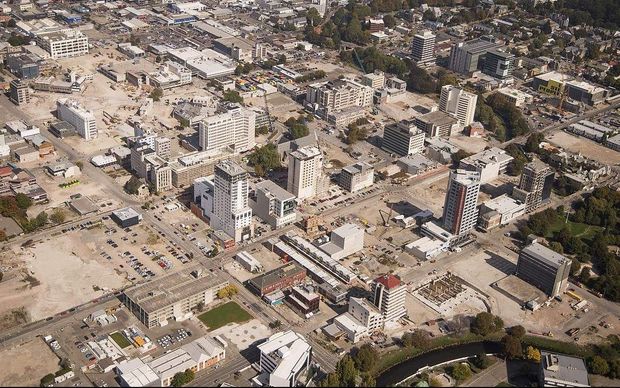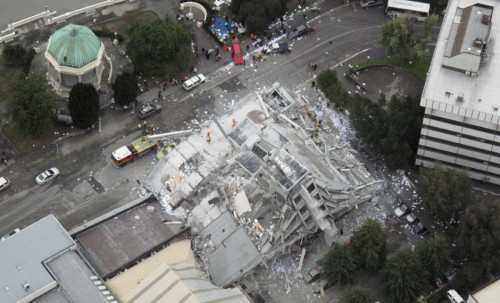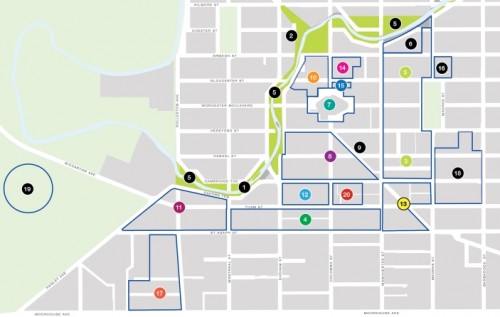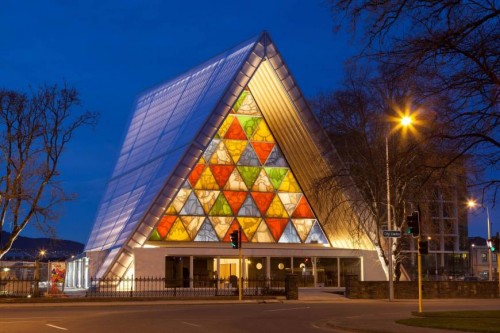

At 12:51 PM on February 22, 2011, Christchurch (ChCh), NZ was struck by a magnitude 6.3 earthquake emanating from a previously unknown, nearby fault. Within seconds 185 people were killed and the Anglican cathedral that was the symbol of the city was destroyed. While the majority of the fatalities were caused by the collapse of two relatively modern office buildings, the destruction was widespread and almost total across the city’s central business district (CBD).
To manage the recovery effort, the national government created the Canterbury Earthquake Recovery Authority (CERA) and cordoned off the CBD until the damaged buildings could be stabilized or demolished. As a structural engineer with the structural engineering firm, Thornton Tomasetti, I had the opportunity to take part in this assessment, which revealed that 70% of the buildings would have to be demolished and replaced at a cost of $40 billion NZ.
In spite of the death toll and destruction, the residents of ChCh were determined to rebuild the city. Some ChCh citizens, even, saw the CBD’s devastation as an opportunity to rebuild a tired and functionally obsolete area into a vibrant, livable central city by emphasizing dense, sustainable, and resilient design features.
Five years after earthquake, I often find myself thinking about ChCh’s rebuilding efforts and how successful the city has been at getting private developers and government agencies to work together to rebuild ChCh. Unfortunately, I have to do my survey from afar, but I still think that the opportunities and challenges that the rebuild has encountered are apparent.
The Good…

Within the CBD, almost all of the damaged buildings have been demolished or stabilized, the city’s infrastructure system has been rebuilt, and residents can once again ride the tram down the main thoroughfares and explore the side streets on foot.
The city has identified locations for twenty “anchor” projects that will be instrumental in its recovery. These projects range from a modern, serpentine-like convention center to an inner-city residential neighborhood built around a large green space.
Where redevelopment is underway, the CBD is becoming more vibrant and creative. Instead of spending a year or more to build a new, traditional mall, developers opened, in October 2011, Re: start, a “pop-up” mall that houses twenty-seven shops and is built out of used shipping containers. Re: start proved to be successful and plans for a more traditional mall downtown are currently on hold.
The Anglican Church hired Pritzker Price winning architect Shigeru Ban to design a temporary cathedral, while the church figured out what to do with the ruins of its iconic cathedral. Ban’s innovative design incorporates non-traditional materials, such as cardboard, and the building has become a destination and symbol of the city’s resurgence since it opened in August of 2013.

The Bad…
Vacant lots remain throughout the CBD. While several small business have moved into the CBD, pedestrian traffic is less than it was before the quake. Many of the office tenants who moved to more intact suburbs following the quake decided that they liked their suburban locations and made their temporary locations permeant. As a result, several new CBD retail businesses have closed shortly after opening and multiple CBD property owners have decided to develop projects elsewhere in NZ rather than rebuild in ChCh.
CERA remains in control of the city’s redevelopment. The city council is regaining some of its power, but, in the transition plan that was released in October of 2015, CERA anticipates being involved with the rebuild through 2021.

… and The Ugly
The Anglican Church began to demolish what was left of the iconic Christchurch Cathedral in March of 2012, but preservations were able to get an injunction stopping the demolition in November of 2012. For now, the ruins of the cathedral remain on the edge of the city’s Cathedral Square as the church and government remain at an impasse.
Earthquakes continue to shake ChCh. These latest quakes have caused only minor damage, but scientists and engineers are still trying to understand the nearby fault’s design ramifications. Owners are hesitant to build new building under this uncertainty – they do not want to be forced into seismically upgrading their new buildings in a few years when the fault is better understood.
The public and property owners alike continue to wonder about the structural integrity of the buildings that were not demolished after the 2011 earthquake. While these buildings were inspected and deemed safe in 2011, hidden damage could still be present and the earthquakes that continue to strike the city could be damaging them further.

Outlook
Five years after the 2011 quake, Christchurch’s recovery appears to be on track: the city’s streets are once again filled with pedestrians at night and new projects are under construction that will once again make the city an international destination. The planners and developers who are leading the rebuilding efforts face many challenges in the coming years, but I cannot wait to see what the city looks like in another 5 years – hopefully, in person this time.
